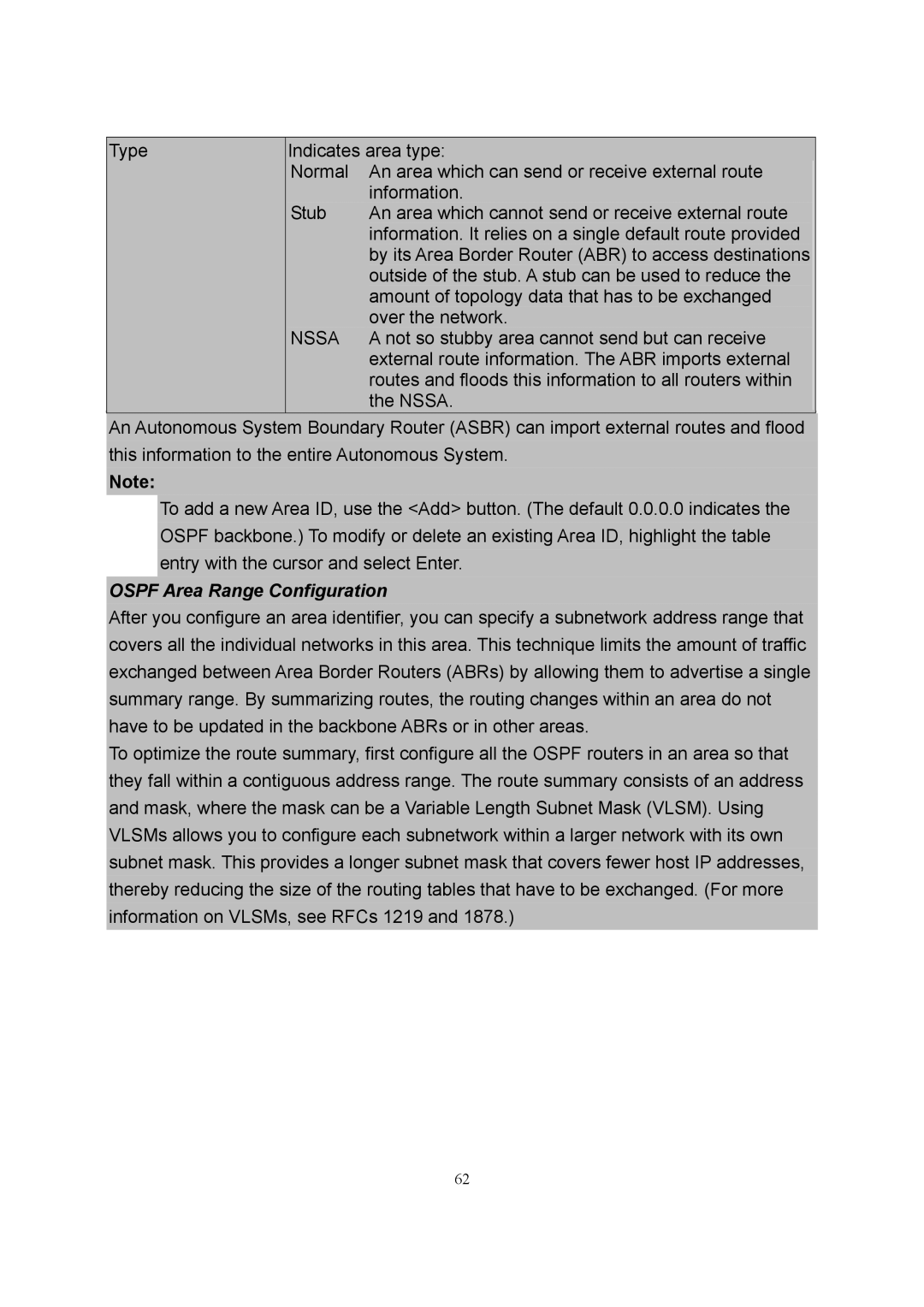
Type
Indicates area type:
Normal | An area which can send or receive external route |
| information. |
Stub | An area which cannot send or receive external route |
| information. It relies on a single default route provided |
| by its Area Border Router (ABR) to access destinations |
| outside of the stub. A stub can be used to reduce the |
| amount of topology data that has to be exchanged |
| over the network. |
NSSA | A not so stubby area cannot send but can receive |
| external route information. The ABR imports external |
| routes and floods this information to all routers within |
| the NSSA. |
An Autonomous System Boundary Router (ASBR) can import external routes and flood this information to the entire Autonomous System.
Note:
To add a new Area ID, use the <Add> button. (The default 0.0.0.0 indicates the OSPF backbone.) To modify or delete an existing Area ID, highlight the table entry with the cursor and select Enter.
OSPF Area Range Configuration
After you configure an area identifier, you can specify a subnetwork address range that covers all the individual networks in this area. This technique limits the amount of traffic exchanged between Area Border Routers (ABRs) by allowing them to advertise a single summary range. By summarizing routes, the routing changes within an area do not have to be updated in the backbone ABRs or in other areas.
To optimize the route summary, first configure all the OSPF routers in an area so that they fall within a contiguous address range. The route summary consists of an address and mask, where the mask can be a Variable Length Subnet Mask (VLSM). Using VLSMs allows you to configure each subnetwork within a larger network with its own subnet mask. This provides a longer subnet mask that covers fewer host IP addresses, thereby reducing the size of the routing tables that have to be exchanged. (For more information on VLSMs, see RFCs 1219 and 1878.)
62
